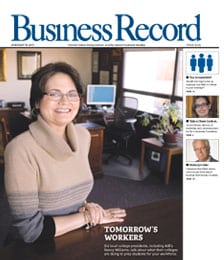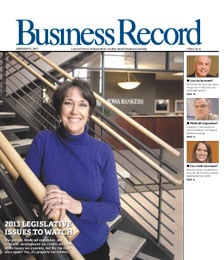Aviva goes virtual

.floatimg-left-hort { float:left; } .floatimg-left-caption-hort { float:left; margin-bottom:10px; width:300px; margin-right:10px; clear:left;} .floatimg-left-vert { float:left; margin-top:10px; margin-right:15px; width:200px;} .floatimg-left-caption-vert { float:left; margin-right:10px; margin-bottom:10px; font-size: 12px; width:200px;} .floatimg-right-hort { float:right; margin-top:10px; margin-left:10px; margin-bottom:10px; width: 300px;} .floatimg-right-caption-hort { float:left; margin-right:10px; margin-bottom:10px; width: 300px; font-size: 12px; } .floatimg-right-vert { float:right; margin-top:10px; margin-left:10px; margin-bottom:10px; width: 200px;} .floatimg-right-caption-vert { float:left; margin-right:10px; margin-bottom:10px; width: 200px; font-size: 12px; } .floatimgright-sidebar { float:right; margin-top:10px; margin-left:10px; margin-bottom:10px; width: 200px; border-top-style: double; border-top-color: black; border-bottom-style: double; border-bottom-color: black;} .floatimgright-sidebar p { line-height: 115%; text-indent: 10px; } .floatimgright-sidebar h4 { font-variant:small-caps; } .pullquote { float:right; margin-top:10px; margin-left:10px; margin-bottom:10px; width: 150px; background: url(http://www.dmbusinessdaily.com/DAILY/editorial/extras/closequote.gif) no-repeat bottom right !important ; line-height: 150%; font-size: 125%; border-top: 1px solid; border-bottom: 1px solid;} .floatvidleft { float:left; margin-bottom:10px; width:325px; margin-right:10px; clear:left;} .floatvidright { float:right; margin-bottom:10px; width:325px; margin-right:10px; clear:left;}
Just as some businesses and marketing agencies have given up on Second Life, Aviva USA is moving in.
The company has purchased an island in the three-dimensional virtual world, and will invite current and prospective agents to tour its virtual building, read about its history and get educational and training resources, among other activities. The island can only be accessed by password now, but eventually the West Des Moines-based company, a subsidiary of Aviva plc, hopes to open it up to all of Second Life’s nearly 14 million users.
“We decided that this would be a great opportunity for us to first start searching for new younger agents that were technology-wise savvy, were educated, the type of demographics if you will that would make good insurance agents for Aviva,” said Mark Heitz, executive vice president of sales and distribution for Aviva USA, who is helping lead this effort.
Meanwhile, Wells Fargo & Co. left Second Life to start its own virtual world two years ago and ING Retail Netherlands, a subsidiary of ING Groep NV, left its Our Virtual Holland site this March. Some local marketers question whether the program is useful to businesses, with problems such as an inability to control other users, especially those who participate in inappropriate activities, and lack of access to mainstream consumers.
Getting in the game
San Francisco-based Linden Lab opened Second Life to the public in June 2003. The Internet-based community exploded in late 2006 and early 2007, but the growth rate in new users has since tapered off.
It is an animated version of real life that’s accessed online. People can create an avatar – a virtual character – that they can use to do things, such as explore the world, create anything from clothing to buildings, and chat with other users from around the world. Because users have the digital rights to anything they create in Second Life, the virtual world also has a booming economy totaling 5 billion Linden dollars. (As of June 10, 265 Lindens equaled $1).
Aviva’s island will have a “resort feel,” Heitz said, with a boat-shaped glass building similar in design to its planned West Des Moines headquarters. A welcome area will give information about the island. Other features include an orientation trail (a walking bridge over the water with tips for navigating the virtual world), a Bright Futures area, with consumer and general information, a wellness center, with a health survey and a private “wellness toolbar,” and a history section (with facts such as how Aviva insured Queen Victoria). The company also will give visitors a free (virtual) Aviva shirt and hang glider.
Aviva became interested in joining Second Life late last year as a way to attract new agents as many insurance agents reach retirement age. Heitz, who works out of Topeka, Kan., but spends a third of his time in Des Moines, said the company’s research found that most Second Life users are between ages 25 and 34 and tend to be well-educated and technology savvy – traits attractive for future agents.
Plus, many are brand sensitive, creating an opportunity for the company to have a presence with other widely recognizable companies, including Nissan, Reebok, Samsung, Sony, Kraft and Toyota. These are “the kind of companies that have tended to be at the forefront of utilizing technology to enhance their distribution and enhance their customer service and customer awareness,” Heitz said.
“I think long term, consumers will use (the Aviva island) for looking into products and analyzing how they fit into their retirement planning and other financial planning needs,” he added, “but the initial thrust is just to try to relate to and attract newer, younger agents.”
Aviva worked with IBM Corp. to create the island, and IBM will help manage the site. The life insurance and annuity company spent about a half million dollars to get its island off the ground and has trained around eight people on Heitz’s team on how to use Second Life.
The company may create an avatar for Aviva USA President and CEO Tom Godlasky, whom Insurance & Technology magazine just named as one of five “tech-savvy CEOs” in its June issue.
Aviva will formally launch its presence in Second Life at the insurance agents’ Million Dollar Round Table meeting from June 22 to 26 in Toronto.
Marketers raise question
Meanwhile, Meyocks Group Inc., which bought oceanfront property in Second Life in 2006 as an experiment to see if the program would provide potential marketing opportunities for its clients, has since backed away.
Chad Baker, creative team lead, said intense media coverage in 2006 and 2007 drove many dedicated users away. Plus, the learning curve for navigating Second Life and the huge amount of memory it takes for the program to run on a computer creates barriers for mainstream society to get involved.
Though Second Life is still an option for clients, he said the company has turned to other social media options that are “a little more accessible to a wider audience,” such as viral videos, blogging, widgets, wikis, RSS feeds and alternate realty games. Often Meyocks will use a traditional media method, such as an insert in a publication, but then add a social media component, such as a link to a chat room in which readers can talk online.
“I predict in the next few years, you’ll see people figure out what Second Life’s best use is for,” Baker said.
Nathan Wright, founder of the social media consulting, strategy and Web marketing firm Lava Row, agrees that the Second Life technology is ahead of its time and that he hasn’t “found a useful marketing application for it yet.” Part of the reason is the threat of being attacked by “griefers,” or avatars that participate in obstructive behavior such as swarming an event with vulgar animations.
“Any time ‘The Man’ tries to come in, griefers attack them,” Wright said. “So it became a Wild West landscape.”
He believes Second Life is a relevant tool for collaborating among co-workers in different locations or for a professor to teach a virtual class, but the site has not become mainstream enough to market products on a large scale. However, Wright has seen other virtual worlds, such as Cyworld (which the majority of South Koreans in their 20s is on) and Club Penguin, a site for preteenagers Walt Disney Co. purchased for $700 million, take off, which could be a sign that virtual worlds will flourish in a few years.
A different approach
Wells Fargo was a part of Second Life when it first went public in 2003, but then left to create its own virtual world in collaboration with Activeworlds Inc., which it launched in 2006. Gina Fung, vice president of experiential marketing, said creating Stagecoach Island allowed Wells Fargo to “expand its capacity for the game, and having a new platform with Activeworlds gave us more flexibility. We also just wanted to consider our reputation management.”
The technology is less sophisticated, making it easier for younger people to use. The average user is between 16 and 22 years old – a prime age for Wells Fargo to focus on to attract new customers.
The company wouldn’t share figures on how many users it has, but Fung said “hundreds of thousands of participants” are going to Wells Fargo’s virtual learning lounge, where they can take quizzes and get information about smart money management.
This interest in education surprised the company (which focused first on entertainment), and led to the second phase of its virtual world development. Players can now buy homes with virtual mortgages, perform a job for a virtual paycheck and buy things with a virtual credit card – so long as they pay their bills.
Fung has a staff of three who help develop fresh content and talk with other users part time. They developed a Stagecoach ambassador, named Cassie, who blogs and spends time in the virtual world. To avoid problems, Wells Fargo also has a player liaison that monitors the island.
Unlike some companies, Heitz of Aviva said he is not too concerned about harassment and other problems that have upset some Second Life users. “I think as we move into the consumer phase,” he said, “we’ll have to monitor that better.”







